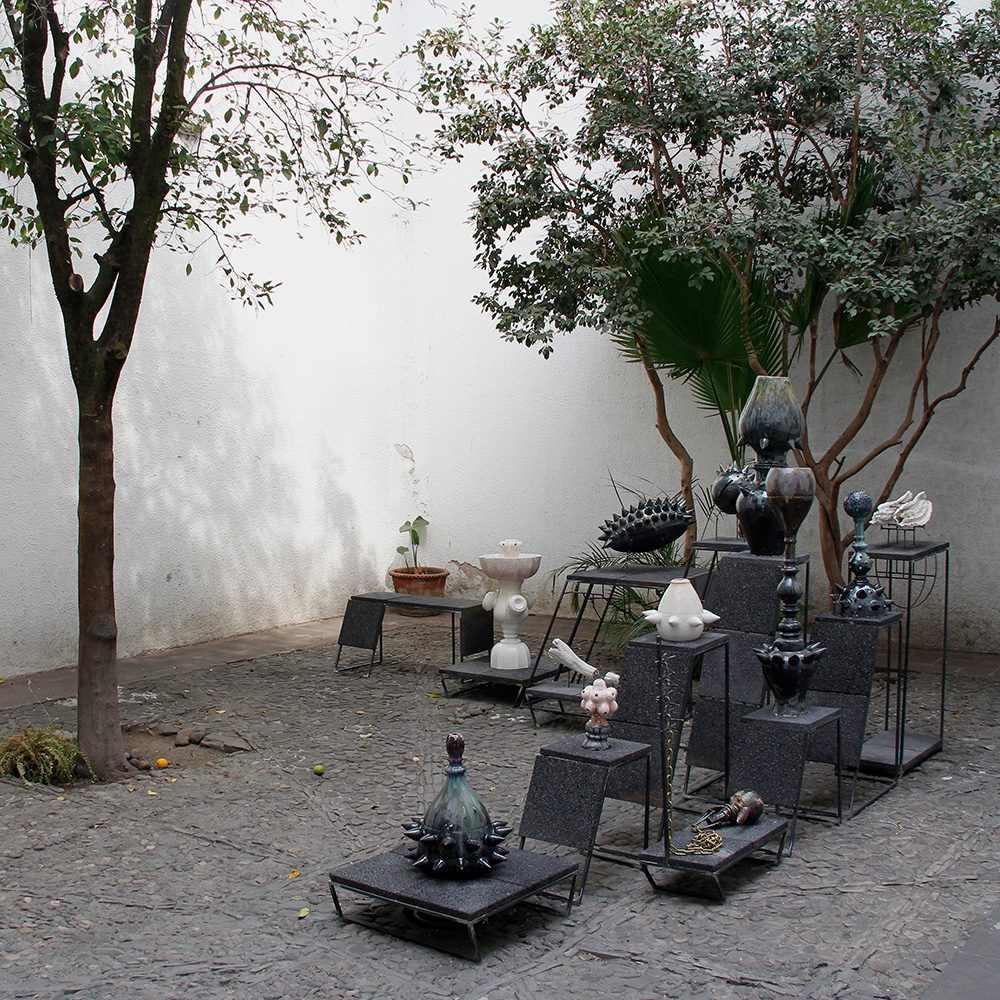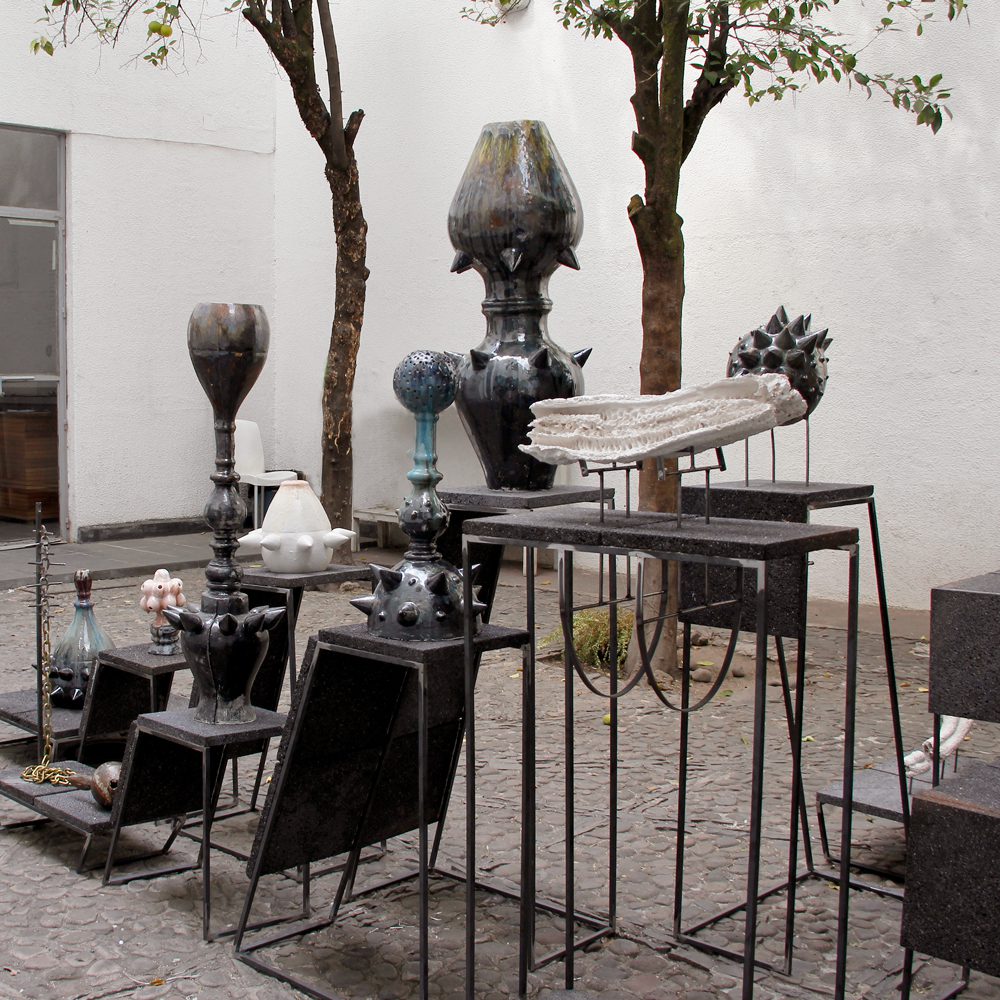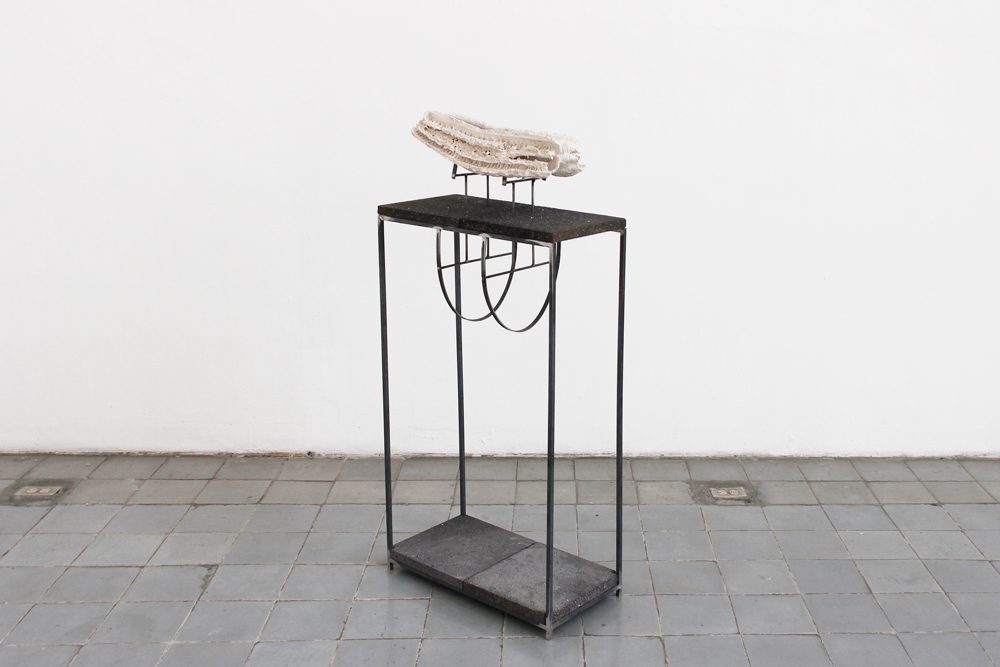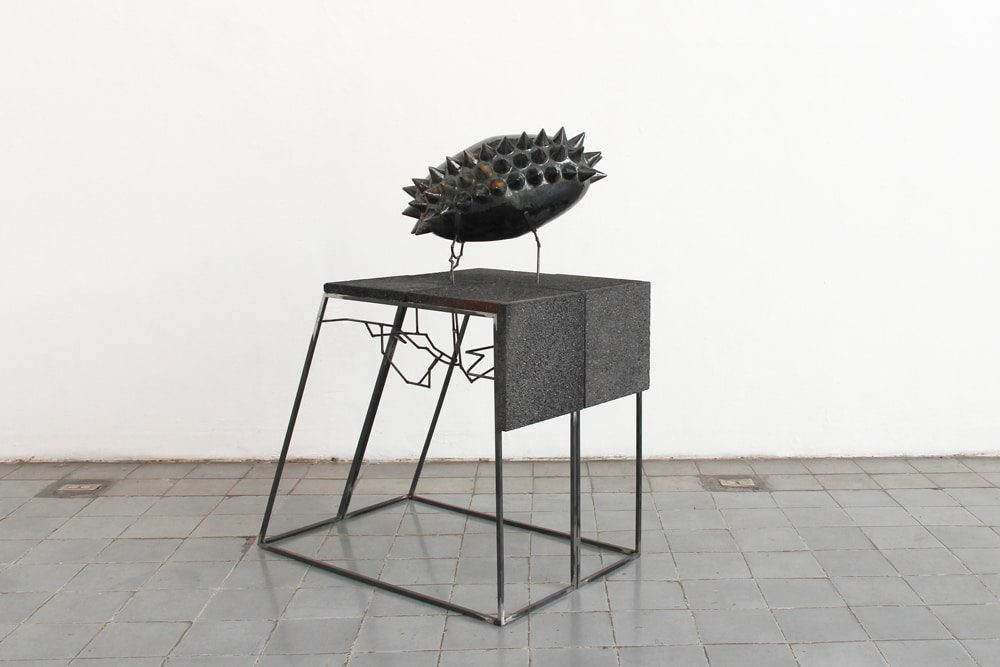


The installation vol. 2: cabal is a reaction to the historic courtyard of the Museo Taller José Clemente Orozco, the site of PAOS GDL. It is an intervention meant to emphasize and support the use of the courtyard as a gathering place. Drawing on his interest in the first-phase industrial music movement of the late 1970’s, Mao provided a setting to encourage transgressive gatherings. PAOS GDL curated a series of events and workshops in the courtyard during the extent of the show.
vol. 2: cabal is an extension of the architecture of the site. The steel and volcanic rock pedestals were built on-site as a rhythmic modular structure, a hyphen between the building and the ceramics. The slight cant of the pedestals allude to the stacked-block construction of ancient temple and pyramidal structures, though their steel and slab construction is a decidedly modernist technique. The installation serves as a junction between a body and the architecture.
Mao treats the courtyard as a centrifuge of codified archetypes, using material and form to reference an ever-widening circle of context. The recognition of vol. 2: cabal changes with circumstance; in the courtyard, it impersonates Mexican architectural archetypes. The perception shifts with a conscientious look at the materials, the glazes reminiscent of Japanese techniques, volcanic stone playing a large role in Mexico but also indicative to the Ring of Fire around the Pacific. The work phases in and out of cultural circumstance. Mao brings into question the mutable significance of these materials, and how we build our own history with every new context.
~
Text by Gamma Galeria:
vol. 2: cabal, 2019
A lo largo de la historia y el desarrollo tanto espiritual como intelectual de la sociedad se han creado y designado espacios como puntos de reunión donde la reflexión y el dialogo surgen a partir de la intimidad desarrollada a partir del entorno concebido por una agrupación de individuos. Los descubrimientos más antiguos de espacios designados para llevar a cabo rituales en grupo se remontan hasta la prehistoria, atestiguando por el hecho de que los seres humanos siempre han buscado reunirse en los confines de un espacio para participar en alguna especie de ritual cuya dinámica y afinidad termina por definirlos como sociedad. Ya sean protegidos por la secrecía de la intimidad o abiertos a ser compartidos libremente, los rituales realizados por diversas sociedades a lo largo de la historia han transformado los espacios donde acontecen y dejado su rastro para ser interpretado por el tiempo.
Desarrollado específicamente para el contexto del jardín de la Casa Taller José Clemente Orozco, vol. 2: cabal parte de la noción de un espacio concebido por la intimidad y el intercambio de ideas donde la contemplación juega el papel principal en la dinámica establecida por el artista. A partir de una instalación compuesta por módulos de esculturas en cerámica colocadas sobre estructuras de metal con tezontle, Yeni Mao (1971, Canadá) establece un perímetro donde el dialogo entre la materia y su entorno invitan al espectador a convivir con el espacio concebido para así encontrar un momento de reflexión.




